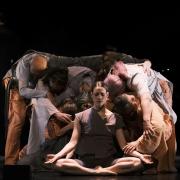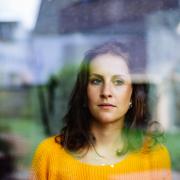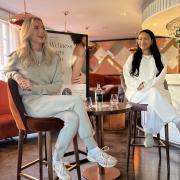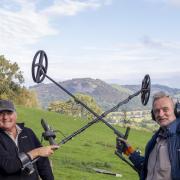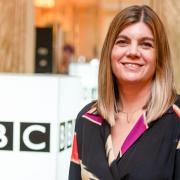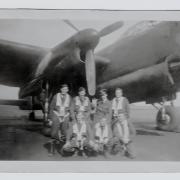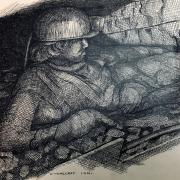Stephen Roberts recalls the forgotten suffragist whose fight for the rights of women started in a Crewe factory
Ada Nield Chew was a campaigning suffragist and socialist who fought for a fairer society and a better deal for women. She’s been dubbed ‘England’s forgotten suffragist’.
Ada hailed from Cheshire yeomanry stock but was actually born in Staffordshire on 28th January 1870, a daughter and second child to William, a farmer and brickmaker, and Jane Nield, and one of 13 siblings. Her schooling lasted until the age of 11 when she was obliged to help her mother look after home and family, which also moved to Worcestershire at this time. This was no easy upbringing. The family moved again to Crewe around 1887 when Ada would have been 17. Her employment, initially, was in a shop in Nantwich.
Ada’s name became inextricably linked with Cheshire in the early-1890s when she found herself working as a tailor in a Crewe factory, Comptons Clothing, based on Bridle Road. There was nothing subservient about this lass, who got herself into deep water writing several letters to the Crewe Chronicle using the moniker, A Crewe Factory Girl. In these heartfelt outpourings of 1894, she condemned the working conditions and treatment of women and girls who were paid far less than men and were even docked money for tea breaks and materials. At a relatively young age she marked herself out as someone who wouldn’t just moan about a grievance but would speak up to try and rectify it. When her cover was blown she was summarily sacked (some sources say she resigned rather than risk her sympathisers being targeted). Ada’s first public appearance was made the same year: she would have made quite an impression with her handsome look and stunning red hair.
Ada’s letters attracted the ILP (Independent Labour Party) and with her identity revealed she began working for it (the ILP was formed in 1893 and would merge into the Labour Party). She was soon elected as a Poor Law Guardian for Nantwich (1894-97), one of the first working-class women holding such a position. One initiative she pushed through was the abolition of the diktat that forbade inmates from conversing at mealtimes. She was also active with the local trades council. Come 1896, when still only in her mid-20s, she was touring the North East in an aptly named Clarion Van, publicising ILP policies. These were the brainchild of the pioneering journalist and socialist Julia Dawson (1866-1946) who edited the women’s section of The Clarion. By this time Ada was in demand as a speaker; she had a story to tell and she was forthright and witty.
The following year (1897) Ada married George Chew, also active in the ILP, at Nantwich Register Office. Ada retained her maiden name as Ada Nield Chew. In 1898 George and Ada had their only child, a daughter, Doris, but this didn’t slow up Ada’s activism for she became an organiser for the Women’s Trade Union League as a new century dawned in 1900. Here she worked alongside the Scottish suffragist Mary Macarthur (1880-1921). Ada’s career was about to take another turn.
The years up to WW1 were eventful for Ada who became an active advocate in the fight for women’s suffrage. This working-class heroine was not one to kowtow to the largely middle-class leadership of the movement however, and this resulted in a passionate debate in The Clarion during 1904, with Christabel Pankhurst, the co-founder of the WSPU (Women’s Social and Political Union), aka the suffragettes, which under Christabel’s prompting became the militant wing of the movement. As well as eschewing militancy, Ada profoundly disagreed with Christabel on another matter.
Ada’s point, which Christabel refuted, was that all women (and indeed all men) should get the vote, irrespective of wealth.As an experienced Labour activist Ada was invaluable in galvanising working-class women whose language she spoke. She became a member of the less-militant NUWSS (National Union of Women’s Suffrage Societies) and worked as one of its organisers as the clock ticked down towards WW1. Ada wrote extensively for both The Clarion and the Labour Leade,’ as well as other journals. Meanwhile, in 1905, as an organiser for the Women’s Trade Union League, she would establish the Crewe branch of the Amalgamated Society of Tailors, while 1912 saw her campaigning for the ILP during the Crewe by-election. Ada advocated free nursery care for babies of working mothers so that women could be economically independent: This came about in the end via the Sure-Start scheme (in 1998!).
The onset of war and the placing of the nation on a war footing saw the women’s suffrage movement largely mothballed as women did their bit in munitions factories, plugging the gaps as increasing numbers of men headed for the Front. Ada adopted pacifism, refusing to partake in war work, and was involved with the Women’s International League for Peace and Freedom.

The end of the war saw women’s suffrage granted in 1918 with some women obtaining the vote although they would have to wait another decade until they received the vote on equal terms with men.
Although Ada was no longer involved in politics she never gave up trying to improve the lot of women while building up her own drapery business, Chew & Co. as well as running a health food store, which emerged out of her penchant for vegetarianism. She was way ahead of her time. Retiring from the business in 1930 when she hit 60, she rewarded herself five years later with a round-the-world tour, having first travelled abroad in 1927.
George Chew died in 1940 with Ada following him five years later, two days after Christmas Day, on 27th December 1945, by which time Britain had emerged from a second world war. Her daughter would later edit an edition of her writings. Dame Millicent Fawcett (1847-1929), the leader of Britain’s largest women’s rights association, the NUWSS, is commemorated with her own statue in Westminster’s Parliament Square, the plinth of which contains the names/pictures of nearly 60 people, predominantly women, who furthered the cause of women’s suffrage. One of those courageous women is Ada Nield Chew.
Today’s campaigners are seeking to have a statue erected for Ada. They will be working with sculptor Hazel Reeves, who designed suffragette leader Emmeline Pankhurst’s statue in Manchester plus the one of suffragist, essayist and poet Elizabeth Wolstenholme Elmy, a story we featured in the magazine last year (Cheshire Great, June 2022 issue). The organisers are looking for people to join the campaign as they strive to fundraise for the statue over the next three years. Kate Blakemore, CEO and founder of Motherwell Cheshire charity, recently walked from the statue of diarist Anne Lister in Halifax to the Emmeline Pankhurst statue in Manchester, tackling the whole of the Rochdale Canal over two days and 40 miles to increase awareness of women’s statues and raise funds for her charity. Motherwell is a service provided for women by women, promoting positive health and wellbeing, a mission statement Ada would surely have approved.
Kate told me: ‘I first heard of Ada five years ago and was surprised that she’s not commemorated in Crewe. My first thought was a blue plaque but I soon decided she deserved more than that so I began the campaign, which will, hopefully, see a statue erected in 2025 outside Crewe’s new history museum. Councillor Dorothy Flude, a former Cheshire East mayor, was Crewe through and through and very keen on Ada, so some people are joining us in Dorothy’s memory. Ada’s great-great-niece has agreed to be a trustee for the campaign and we are also getting in touch with other family members. We really want people to appreciate Ada’s life and her modern relevance. Crewe Women’s Day (March 4) will have Ada’s letters on display at Cheshire College (Crewe), while Winsford Women’s Day will see Hazel speak at Reaseheath College (Nantwich). We will also be going to local schools to tell Ada’s story, including reading her letters. Ada was so prominent in Crewe; it’s important that people know her story’.

CHRONOLOGY
1870 – Ada Nield born in Staffordshire (January 28), a second child of 13.
c.1887 – The Nield family moves to Crewe with Ada initially working in a Nantwich shop.
1894 – Ada makes a name for herself writing letters to the Crewe Chronicle but loses her job.
1896 – Begins touring the North East in a ‘Clarion Can’.
1897 – Marries George Chew in Nantwich Register Office.
1900 – Organiser for the Women’s Trade Union League.
1904 – Passionate debate in The Clarion with Christabel Pankhurst.
1912 – Campaigning for the ILP during the Crewe by-election.
1930 – Retires from her business aged 60.
1945 – Death of Ada Nield Chew in Burnley (December 27) aged 75.




